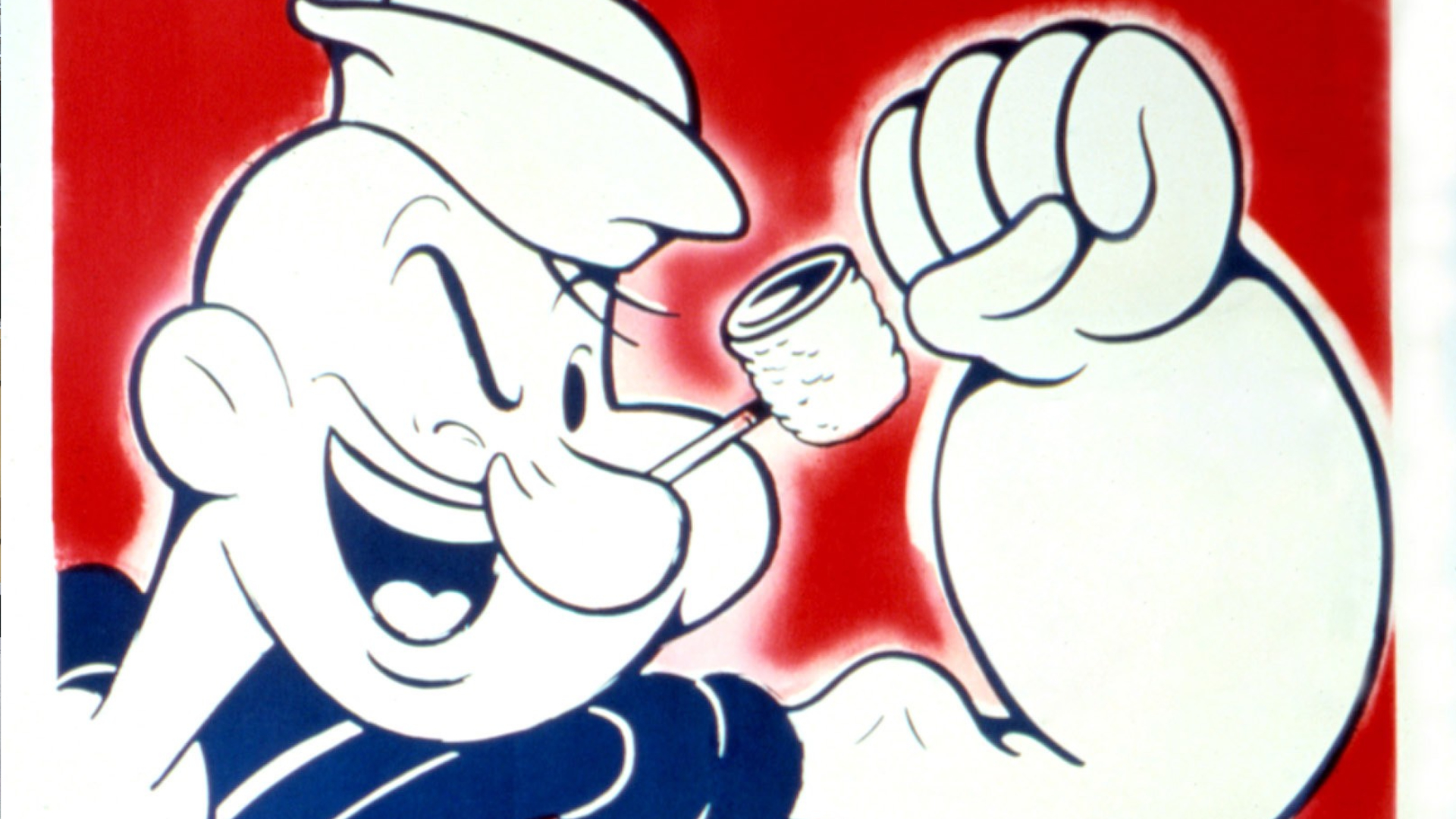Popeye and Tintin have entered the public domain, so I'll just go ahead and start the countdown clock for our first Sailor Man soulslike
Any spinach-fueled super strength might have to wait a couple more years, though.

It's a new year, and that means a new crop of iconic characters—some more than others—entering the public domain. According to Title 17 of the United States Code, once 95 years have passed since the creation of any "anonymous work, pseudonymous work, or work made for hire," that work belongs to everyone. There's something beautiful about it: These are the people's works now, to be redistributed and rewoven into new art without the strictures of copyright.
It's the closest thing we have to a utopian ideal in copyright law—an ideal that, if you ask me, is worth honoring. And what greater honor could there be than putting Popeye the Sailor in a bunch of videogames he probably shouldn't be in?
First appearing in 1929 as a side character in the comic strip Thimble Theatre by cartoonist E. C. Segar, Popeye entered public domain on January 1 alongside other historic works like Faulkner's "The Sound and the Fury" and the first English translation of All Quiet on the Western Front. Another iconic comic strip character is joining Popeye in the public domain: Tintin, the swoopy-haired hero of Hergé's The Adventures of Tintin, who also made his debut in 1929.
We're closer than ever to finding out what it would be like to recruit Tintin in a party-based RPG or be the designated Popeye main in your hero shooter of choice—assuming there are game developers willing to make some questionable choices with their creative direction.
Nothing in intellectual property law is without its caveats, however. Only the earliest portrayals of Popeye and Tintin are now public domain works; any design changes and characteristics that emerged after 1929 are still under copyright protection. We watched a similar situation play out last year when the copyright expired for Steamboat Willie, Mickey Mouse's first appearance. While Disney's rodent-in-chief has since been remixed into streamer-fodder horror games and top-down shoot-‘em-ups, you'll notice that those reinterpretations have been careful to stick to Mickey's original aesthetic.
Popeye's hallmark spinach habits, for example, weren't established until 1931. If you were compelled to make your own Popeye reboot, any spinach-based super strength powerups could, theoretically, run the risk of landing you in legal hot water. (However, there's a chance that Popeye's spinach-strength has already been in the public domain for decades thanks to a neglected copyright renewal, as the Duke Center for the Study of the Public Domain directors Jennifer Jenkins and James Boyle have discovered. Copyright is hard.)
Complicating things further is the fact that, while copyright might be expiring on Popeye's first appearances, the Popeye trademark hasn't. Copyright, which protects original creative works, has a defined duration. Trademarks—which protect brand-specific names, logos, and images—last as long as they're in use, and the Popeye trademark, currently owned by Hearst Holdings, has been maintained since 1931.
Keep up to date with the most important stories and the best deals, as picked by the PC Gamer team.
Does that mean developers should be leery about any uses of the ur-Popeye texts? Probably not. As Jenkins and Boyle explain, trademark's protections are meant to prevent brand confusion. Any Popeye media you might want to make should be safe, Jenkins and Boyle say, "so long as people do not think Hearst is producing or sponsoring your work."
Popeye's terrifying forearms are, as far as United States copyright laws are concerned, yours to do with as you will. A Sailor Man soulslike, perhaps. It worked for Pinocchio in Lies of P.
Personally, I'm more excited about Dashiell Hammett's Red Harvest hitting public domain. Surely someone will announce a Disco Elysium-like featuring the Continental Op any day now.
Lincoln has been writing about games for 11 years—unless you include the essays about procedural storytelling in Dwarf Fortress he convinced his college professors to accept. Leveraging the brainworms from a youth spent in World of Warcraft to write for sites like Waypoint, Polygon, and Fanbyte, Lincoln spent three years freelancing for PC Gamer before joining on as a full-time News Writer in 2024, bringing an expertise in Caves of Qud bird diplomacy, getting sons killed in Crusader Kings, and hitting dinosaurs with hammers in Monster Hunter.

